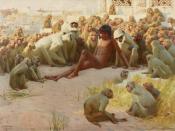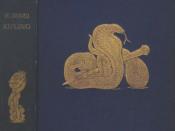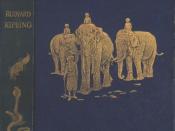The Jungle Book by Rudyard Kipling is truly not what you might expect. Readers are disillusioned by Disney's version of the story which presents not even remotely one fourth of the book. In actuality, The Jungle Book is a collection of short stories written mainly about animals and their interactions, not only one with another, but also with humans. There is the tale, which is the most famous, of Mowgli, the man-cub and his adventures growing up in the jungle and his plight against the monkeys, and the villainous tiger, Shere Kahn. This book also tells many other entertaining short stories such as Kotick, the white seal and his search to find a safe place for the seals to live.
Also included is Rikki-Tikki Tavi, the mongoose and his adventures with humans and Nag the snake. There are several other stories which are included in this entertaining fictional children storybook collection.
Perhaps the reason that the story of Mowgli and his adventures are the most famous is because it is the most entertaining. Kipling manages to include his audience in his writing and make them feel as though they are swinging through the trees along with Mowgli. He also introduces the Law of the Jungle which provides the reader with a subconscious set of morals and values that they may implement in their individual lives. Though these stories may have been the original audience for children, adults can find entertainment and even an implied moral message.
While The Jungle Book serves an entertainment value, it does not however provide for repeat enjoyment. Because of its basic and elementary nature, it is not conducive to in-depth analysis and interpretation. Kipling, however, manages to portray every scene as if the reader was actually looking at the goings on. We find ourselves cheering...


